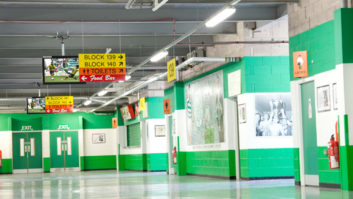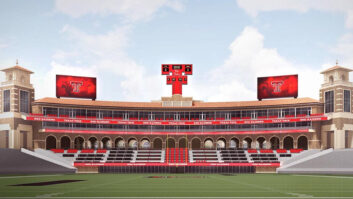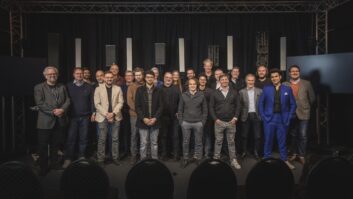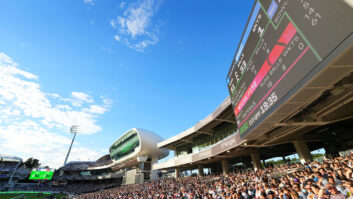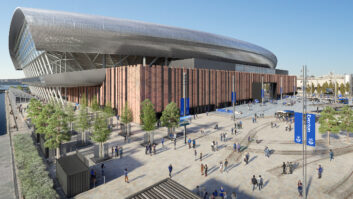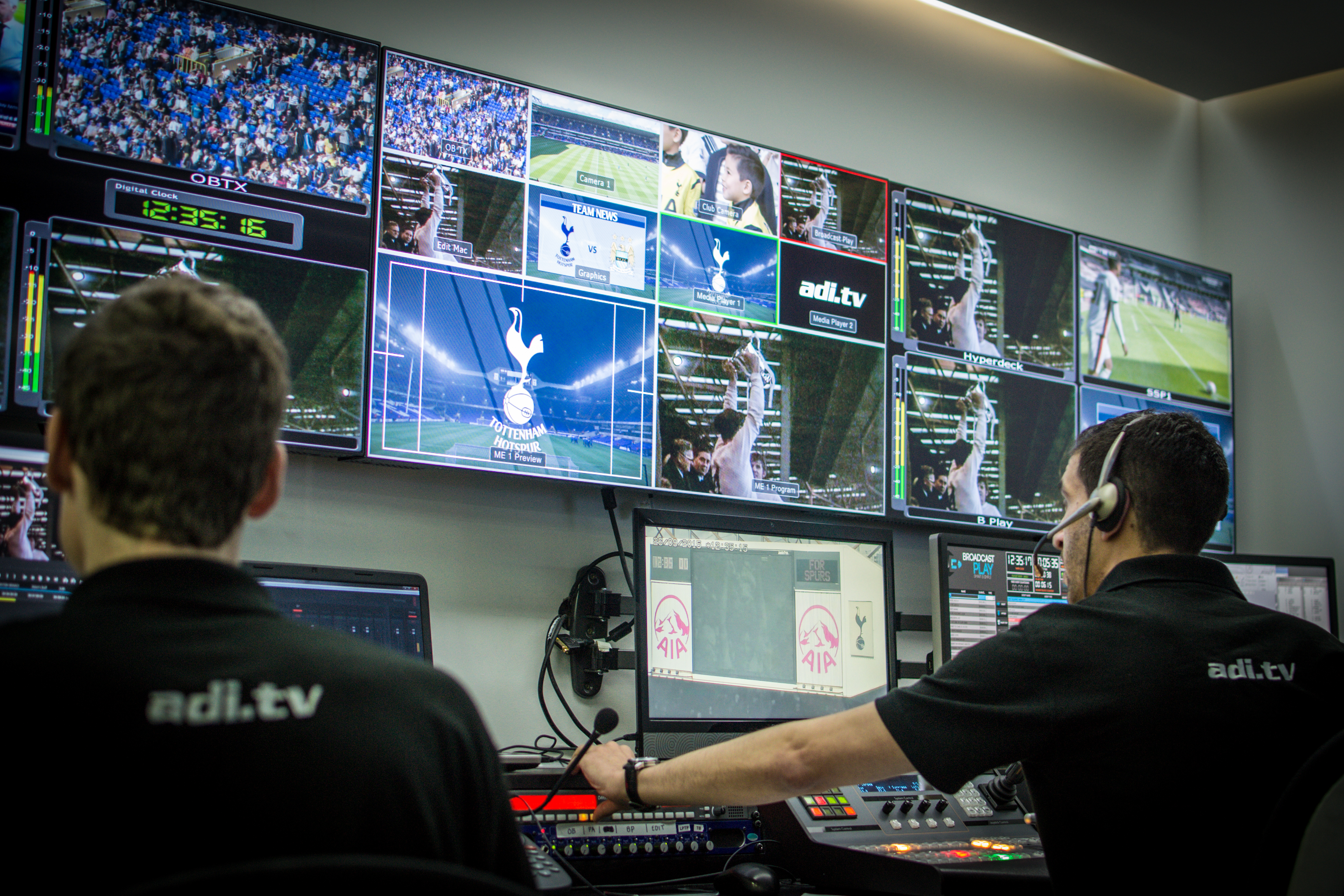
Opportunities to reach new audiences and open up fresh revenue streams mean that an increasing number of sports venues and federations are investing in broadcasting equipment and becoming content creators in their own right. David Davies examines a trend that is impacting venues ranging from local athletics centres all the way up to top-flight football stadiums.
It was perhaps inevitable that the increasing accessibility of high-quality, low-cost broadcasting equipment would encourage more sports venues and organisations to explore new ways of reaching their fans beyond the traditional broadcasting rights holder infrastructure. But the extent to which this has become commonplace over the last few years has surprised many people – as have the diversity and innovative nature of the content being produced.
Broadly speaking, sports venues and organisations are looking to produce content to satisfy two primary requirements: the deeper engagement of fans on actual event days – before, during and after the sporting activity has taken place; and outside of event days with a wealth of online content to maintain excitement levels about the venue or club between fixtures. In both cases, this content brings with it fresh opportunities to generate advertising and/or sponsorship revenue.
Although the content boom sprang in large part from the world of football – where clubs like Chelsea and Arsenal now have their own sizeable broadcast and media departments – it has permeated many other sports, including rugby, tennis and athletics. Inevitably, the available resources will determine how deeply a venue or club is able to become involved with content production – or how many sophisticated broadcast-quality tools it can add to its infrastructure. But with the last five years witnessing an explosion in the availability of compact and integrated media production solutions, the ‘entry point’ into this world is increasingly within reach of even the smallest operations.
Price and accessibility
As the company behind some of the production solutions most commonly specified in sports venues around the world, NewTek is well placed to track the recent emergence of a new type of content producer. For director of sales east, EMEA, Chris Waddington, it’s the result of several important developments intersecting.
“It’s no longer the reserve of the elite, and that’s down to two primary factors,” he says. “Firstly, the equipment needed to create high-quality content is now more accessible cost-wise than ever, bringing it within reach of a vast majority of people – not just top-flight teams, but lower leagues as well. Secondly, the business model is such that production teams now have more ways of monetising their content, and can therefore achieve a greater return on their investment.
“Making the in-stadium experience more compelling is a particular driver of change, suggests Waddington. “From a business standpoint, increasing revenue steams beyond just tickets sales is a compelling reason for teams and stadiums to invest, whether it’s an upturn in food and beverage or merchandise sales, or more time spent in hospitality areas. If you can engage with fans and provide compelling content that grabs and holds their attention, then they are likely to stay in the stadium for longer, and you are on the way to generating more revenue.”
Based in Preston, Lancashire, ADI’s remit has grown from supplying LED screens to providing a variety of solutions intended to power fan engagement, including full support of venues and clubs on match-days as well as the production and archiving of content. ADI’s Daniel Gray agrees that “most clubs are now able to provide content on at least a weekly basis, and at the bigger clubs it is more likely to be daily. [In terms of material being distributed online] it is certainly the rise of social media and the demand for more content that is leading clubs and venues to invest in the resources that allow them to become content producers.”
Colin Farquhar, CEO of enterprise IP video technology specialist Exterity, says: “While we are not seeing the trend at the bottom-tier football clubs just yet, the second tier is certainly becoming [more involved with content production]. In the English Football League, in particular, there is a huge drive towards fan engagement and the improvement of the match-day experience so that it appeals to the younger generation. So you see a lot of people trying to find new ways to do that through in-house media production, social media sharing and distribution of video within the arena or stadium itself.”
The online content is also helping to drive physical attendance at sports events, says Kevin O’Connor from Sonic Foundry, whose flagship solution is the Mediasite Video Platform – an automated and scalable system for creating, publishing, searching and managing video material. “A lot of the stadiums and associations we deal with are using the online content to drive in-person attendance – the idea being that people will see material online and think that would be a great thing for me to go in the near future,” says O’Connor.
At the most basic level, it is possible for venues and clubs to invest in a very basic set-up – essentially little more than a few cameras and some decent editing software – that allows them to capture player interviews and other footage around the ground. But the availability of lower-cost integrated production solutions is prompting an increasing number of venues to raise their sights expectation-wise.
www.adi.tv
www.exterity.com
www.newtek.com
www.sonicfoundry.com
